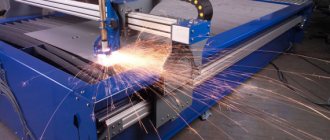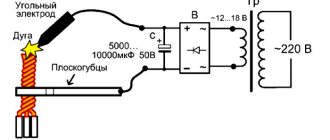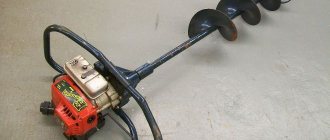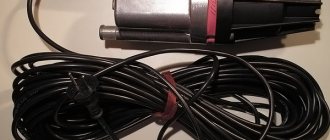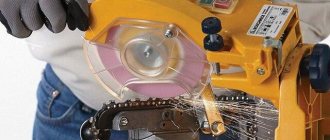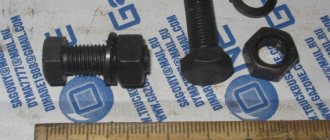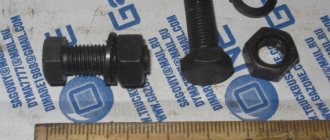An electric jigsaw is a device of regular practical use for every woodworker, and the development and improvement of technology has expanded the scope of its practical use. Now the device can be successfully used when working with other materials; the only thing that should be taken into account is the correct choice of saw blade. Jigsaw files are classified according to several of the most significant characteristics, which allows you to initially select the right attachment depending on the features and type of cutting. Let's try to figure out how to choose the right file for your jigsaw, and what types there are.
The main feature that most accurately separates all variants of jigsaw files is the type of material being processed. This classification allows you to describe in detail the operating features.
Wood files
Initially, a jigsaw came to the aid of those who regularly worked with wooden materials. Despite the fact that modern electric models have become much more advanced and can cope with a greater variety of materials, woodworking remains a priority. Depending on the type of work performed, you should select tool accessories.
Making a quick cut
Very often, when cutting wooden materials, the first place is not the cleanliness and accuracy of the cut, but the speed with which this process is performed. To do this, it is recommended to purchase blades designed for quick sawing. They can be easily distinguished from other varieties by the following parameters:
- the length of the canvas must be at least 60 mm;
- tooth size reaches 6 mm;
- the divorce is large (about 1 mm).
When cutting wood and similar materials across the grain, it is better to use a blade with a straight tooth. If you are making a longitudinal cut, it is better to take a file with an oblique tooth.
Devices for working with a jigsaw
When choosing a jigsaw, you should consider the jigsaw's ability to install additional accessories.
Manufacturers, in order to ensure that people buy their jigsaws and not competitors’ tools, produce equipment that helps them do the job efficiently and quickly. Such useful devices in every sense include a device that prevents damage to the surface of the material: chipboard, fiberboard, plywood and others. This device is installed on the base plate.
A device (stop) has also been invented that facilitates the production of similar objects (slats), the distance between which can vary up to 14 cm. Manufacturers of cutting tools come up with various innovations every day to improve the cut or the conditions in which a person works. When buying a jigsaw in a store, you need to ask the seller questions about the equipment for the device. So, you can choose something that will speed up or improve the processing of various products. No matter how beautiful and “especially resistant” the canvas is purchased, without a tool (a jigsaw) it’s just metal trinkets.
This is where the main question arises: how to choose a jigsaw? Any problem, even the most complex one, can be analyzed using an analogy. Why pay more? When buying a jigsaw, you need to answer the following questions:
- how often the tool will be used;
- you need to work quickly or you don’t have to rush;
- can life turn out in such a way that you will have to earn money with the help of a jigsaw;
- Won't my wife throw him and the jigsaw out into the street?
The main difference between jigsaws can be in power and depth of cut. The more powerful the jigsaw, the greater the depth of the cut. It is necessary to pay attention to how easy it is to mount the file into the holder, and whether the set includes a laser if a precise cut is required. All reputable manufacturing companies do not skimp on design. Jigsaws are sold in cases with a set of blades and accessories. Bosch power tools are of excellent quality. Accordingly, it is very expensive. But you can pamper yourself with such a tool so that you can carry out all the work in the house with complete comfort.
Files for metal materials
To work with metal products, it is better to use a specialized tool. The fact is that jigsaws are not designed for high loads, so the teeth become dull very quickly. However, sometimes a situation may arise when there is nothing at hand other than such a tool. In this case, it is better to purchase several special files in advance.
Their main difference from wood saws is that they are made of high strength steel. In addition, they have very fine teeth, which are set in a special wave-like manner. In the case where the work of sawing metal is carried out regularly, it is better to immediately take care of a sufficient number of blades.
It is recommended to purchase varieties for aluminum, steel and other non-ferrous metals. However, if such work is not performed too often, then it is quite enough to have only a steel blade. It can handle any non-ferrous metals quite well.
For metal work
Modern jigsaws are capable of sawing various metals, including black steel. However, the productivity of the tool when working with such materials drops sharply, the depth and speed of the cut decreases, and at the same time the wear rate of saw blades sharply increases.
Files for metal processing are made from high-quality high-strength steel and are distinguished by fine teeth (up to 1 millimeter) with a wavy sharpening. If you often have to work with metal parts, we recommend buying several files: separately for steel, for aluminum, for bronze and other non-ferrous metals.
For sawing other materials, such as plastic, polymers, plexiglass, plasterboard, manufacturers develop unique types of blades that are suitable specifically for a particular material. When processing particularly hard surfaces, we recommend purchasing tungsten-coated files.
Files for polymer products
If there is a need to cut pipes or other PVC products, it is not necessary to prepare specially for this. Any metal or wood blade is suitable for this type of work. The main thing is that they have a large tooth. Of course, you can use fine-toothed blades, but they will quickly become clogged with plastic and will have to be cleaned regularly. If you need to cut thin plastic, you should use metal files with a fine tooth. If the material is thick, then wood canvas will do. In any case, the cut must be performed at minimum speed.
Shank type
The shape of the part of the file inserted into the jigsaw - the shank - determines the way it is clamped in the tool.
Saws with a T-shaped tail are ubiquitous. They are suitable for most modern models of jigsaws for wood, such as those developed by BOSCH, a trendsetter in this area. In jargon they are called "European type".
American models (DeWalt, Black&Decker) use saws whose tail end ends in a semicircular cutout resembling the letter U. Such shanks fit all clamps with a block or screw. In the jargon - “American type”.
There are still special Makita shanks and T-shaped “Bosh” shanks, but with two stops. They are suitable only for old models of jigsaws from these companies and, rather, are rarities.
To perform specific types of work
Not everyone knows, but you can buy blades for glass or ceramics for a jigsaw. They are made from alloys of particularly high strength and are coated with diamond or tungsten carbide. Such blades are useful for curly cuts. Straight cutting is best done with a specialized tool. To work with drywall or rubber, it is recommended to purchase special blades. Their cutting part is almost smooth - it does not have teeth, but polished waves.
File for glass and ceramics
In addition, there are universal saws that can cut metal, wood or polymer materials. However, you should not expect high performance and quality from them.
Classification of files according to other criteria
The demands placed on the instrument are currently very high. Productivity, speed of work, accuracy of the cut, and its evenness are important. Blades suitable for a jigsaw can be combined into several groups according to the following characteristics:
- shank type;
- options for the shape of saw teeth;
- canvas width;
- tooth pitch;
- thickness of the canvas.
By shank type
T-shaped option . This shank is called “Bosch”, since it was the Bosch company that came up with the idea of its creation. Focusing on the leader in this field, other manufacturers began to produce jigsaws with the same shanks, which is why they are now ubiquitous.
U-shaped shank. The next most frequently used is the American version, which is suitable for older types of jigsaws. Also compatible with models with screw and block terminals.
Makita and Bosch shanks. Rare representatives of their species, suitable only for jigsaws of the same manufacturer, and of the old type.
According to the shape of the teeth
With set milled . In such variants of files, the teeth are bent in different directions in turn. In this case, the width of the wiring is considered normal to be equal to 1.5th the thickness of the canvas itself. Thanks to the wiring, strong heating does not occur, and sawdust is removed simply and easily. They are used for quick cutting of not too hard wood, as well as plastic structures and non-ferrous metals.
With wavy milled. The setting is carried out in groups of teeth that deviate alternately to the left and to the right. The magnitude of the deviation of each subsequent one differs from the angle of inclination of the previous one, thus forming a wave. These saws are used for clean cutting of plastic and aluminum products and non-ferrous metal materials.
With ground teeth, conical grinding. It is used exclusively for finishing cuts when processing wood and plastic, as well as laminate and polymer materials.
With divorced polished. Used for rapid cutting with rough cuts of soft woods, chipboards and fiberboards.
According to the width of the canvas
This file parameter is selected taking into account the specific requirements for specific work results. Wide blades are more stable, so nothing gets in the way of sawing at high speed without fear of deviations. If you need to cut out a curve with high quality, then narrower options are suitable; with their help you can easily negotiate turns. In this case, it is necessary that the teeth themselves are located directly on the drive axis - this gives the tool controllability.
By tooth pitch
The step is the length of the trajectory between the vertices. Most countries have adopted the pitch designation TPI from the English “teeth per inch”, measured by the number of teeth per inch. That is, if, for example, the TPI value is 5, then this means that there are 5 teeth in one inch of blade.
If wood needs to be cut crosswise, then it is advisable to use saws with a TPI of 7-4; for normal work, 9-7 is sufficient; if extremely precise and accurate cutting is required, 13-10 is enough. It is also necessary to take into account the thickness of the source material; 6-8 teeth must be involved in the work, otherwise the blade will begin to vibrate and the cut will turn out torn.
File 6 TPI
According to the thickness of the canvas
The thickness of the file determines how much it will deviate from the vertical installation. From this point of view, thick saw blades best provide an even, perpendicular cut. However, they almost certainly will not fit jigsaws that have a quick-release mechanism.
Saw blade width
The quality and speed of cutting when moving in a straight line, as well as the ability to cut curves, depend on the width of the saw blade. The wider the saw blade, the more stable it is: it allows a higher cutting speed and deviates less from the cutting plane. To cut curved lines, you should use narrower saw blades: they fit better into turns. It is important that the teeth of such a saw blade are located on the drive axis of the jigsaw. This increases the controllability of the tool: it can more accurately follow the intended cutting line.
Marking of files
Marking jigsaw files is especially useful for those who are not yet experienced enough in carpentry and cannot indicate the purpose of the attachment based on its appearance.
Most manufacturers tend to label their products using the system invented by Bosch.
So, the marking is affixed to the tail and contains a combination of letters and numbers.
Marking of files
The first letter in the combination indicates the type of shank:
- T-shape,
- U-shaped,
- M - for Makita jigsaws,
- Fein standard.
The following is a number indicating the length of the canvas:
- 1 - the shortest length, does not exceed 75 mm,
- 2 - average 75-90,
- 3 - long 90-150,
- 7 – the longest files with a length of over 150 mm.
The next letter indicates the size of the teeth:
- A – fine teeth,
- B – average,
- C or D – large.
The last letter indicates some additional important information:
- F - working part made of particularly strong bimetallic alloy,
- P - precise cut,
- O - narrow back,
- X - progressive tooth pitch,
- R - reverse (reverse) direction of the teeth.
The color of the shank can also say a lot. Gray indicates that the saw is intended for wood materials, blue for metal, and red for plastic structures.
Types of file markings
The type of steel used as the basis for the blade during production is indicated by a special combination of letters on the neck:
- HM – hard alloys,
- CV – chrome vanadium steel,
- HSS – high-speed steel,
- HCS (CV) – high carbon steel,
- BM (BiM) - CV and HSS connection, very strong and durable.
Often the file is marked with letter designations that directly reflect the essence of its purpose. For those who are at least a little familiar with the English language, deciphering these letter combinations will not be difficult.
- "Wood" indicates working with soft wood and other soft materials.
- "Hardwood" - solid wood, PVC panels.
- “Inox” – works with stainless steel.
- "Metal" - metal.
- "Alu" - aluminum.
- Fiber, Plaster - fiberglass.
- Soft-material - rubber, carpet.
- Acrylic - polycarbonate.
